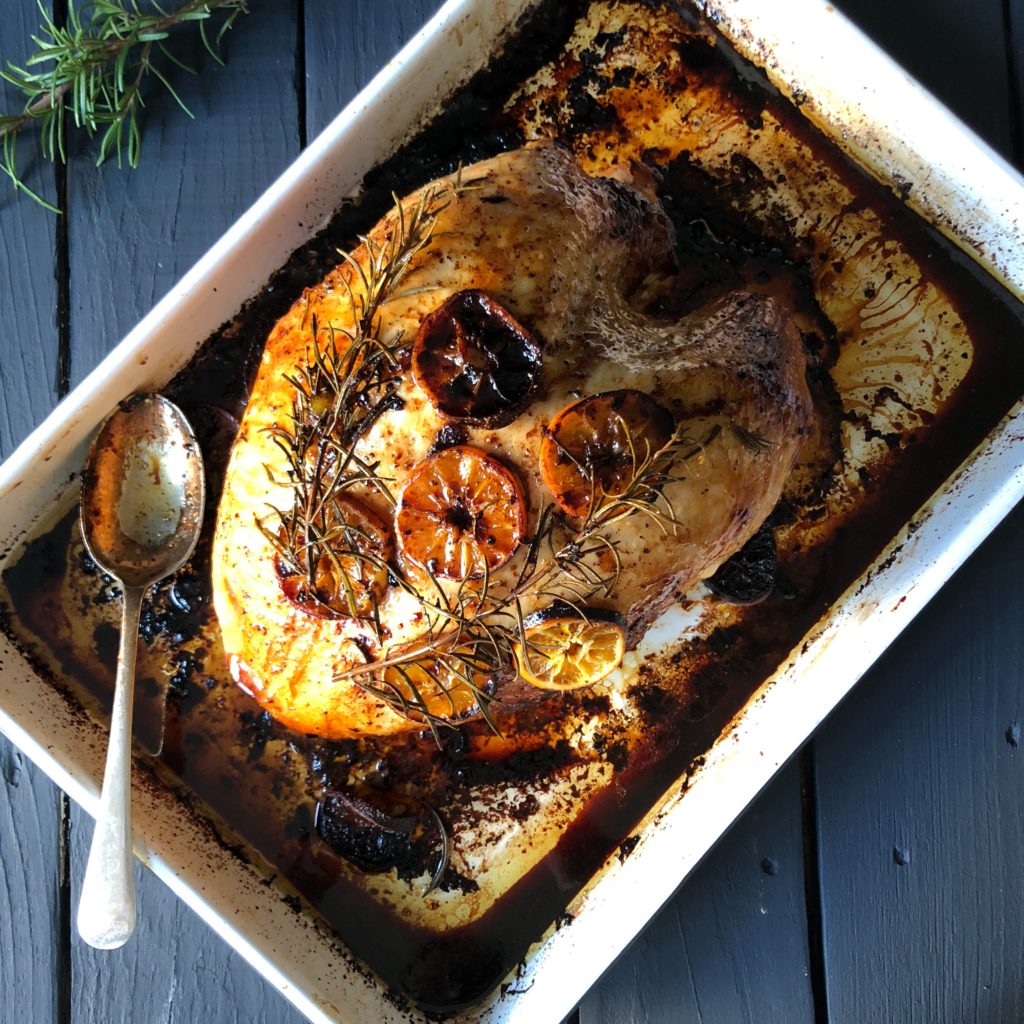Most of us love a ham at our Christmas spread. Not the sliced stuff we eat during the year slapped on a sanger. But ham from a whole ham with glazing, crackling and Christmas trimmings.
But what’s the best way to store your Christmas ham to make sure it stays safe to eat? Our Senior Food Scientist, Dr Rozita Vaskoska, has got your festive food covered this year.
There’s more than one kind of Christmas ham
The hams we cook for Christmas celebrations are basically a pork leg with or without the bone. It is pre-treated by smoking, curing or cooking. Like bacon, smoked or cured ham normally needs some cooking before we tuck in.

How long can you store your delicious festive roast? Well, it depends.
How long can you keep Christmas ham?
If you buy your ham from the supermarket already cooked, it can be refrigerated for as long as the use-by-date indicates.
PrimeSafe Victoria, the regulatory body for meat in Victoria, indicates that cooked ham when unopened has a shelf life of two weeks. When opened, a shelf life of one week, so long as it’s still refrigerated.
But this includes the time before you bought the ham. As consumers, we’re unlikely to know how long that ham has been kept. Whether that is the supermarket shelf or in the butcher’s fridge. So refer to the use-by-date as a guide.
If there is no date or packaging on the ham, don’t keep it for longer than three days. Buy it as close to Christmas as possible. Freeze it if you’re buying it earlier to prevent wasting of this precious food item.
What about cured or smoked ham?
Dry cured ham has a total shelf life of two weeks when opened and refrigerated. It can last for up to three months when unopened and refrigerated as per Primesafe guidelines. Again, use-by-dates should be used as an indication for the remaining time you can refrigerate ham after purchase.
If you intend to do the brining or smoking yourself with a raw pork leg, the meat will have an even shorter shelf life. In the absence of a use-by-date, if bought unpackaged from the butcher, it can only be refrigerated for up to five days in total.
If you purchased a cured or smoked ham and you cooked it for your Christmas dinner, you can keep the leftovers for four days in the fridge. If you can freeze them in a sealed container or freezer bag, they will keep for three months. Freezing it in smaller portions means you can defrost small amounts for popping into sandwiches.
If you’ve left any ham at room temperature for longer than four hours, discard the remainder. Do not freeze it for later.
What can you do to extend the life of your ham?
Smoked and cured hams already have preservatives in them such as nitrates and salt. These additives extend the shelf life of the meat compared to raw meat. Proper temperature control from purchase to the eating or reheating occasion will make sure that the ham is safe and maintains its quality. Keep your meat and seafood in the coldest part of your fridge. Your thermometer should show a temperature below five degrees Celsius in the main part of your fridge.
Do ham bags work? Do you need to soak them in vinegar?
Ham bags are normally used to preserve moisture during storage or cooking so that the ham stays moist and doesn’t dry out. Ham bags are food contact materials and should be manufactured according to safety standards. Plastic oven bags don’t require pre-treatment with vinegar or any other substance before use. Any chemical pre-treatment you can do at your home won’t be as effective in killing microorganisms that may be present compared to the heating that will follow. Cotton ham bags sold for Christmas can be used for refrigerated storage of ham, and they can be treated as per manufacturer instruction (for example with vinegar).

Cooked turkey can be kept for four days refrigerated.
How long can you keep turkey?
Cooked turkey can be kept for four days refrigerated (if it has not been kept for longer than four hours at room temperature) or about three months frozen if packed in a container or freezer bag.
How long can you keep cooked vegies?
Cooked veggies can be kept four days in the fridge. However, they will not remain as fresh and crispy as when eaten immediately.
Can you re-freeze a thawed turkey?
Yes, thawed turkey can be refrozen, but the quality will decrease. Freezing creates ice crystals that will affect the proteins in the meat, and when it’s heated up again, the turkey may retain less moisture and end up drier or tougher.
How long can you keep cooked prawns?
You can refrigerate prawns for up to four days or freeze them for three months.
Can you freeze and refreeze prawns?
Yes, but freezing and defrosting will decrease the quality and make it vulnerable to contamination. If defrosting seafood, always do it in the refrigerator and cook them as soon as they are defrosted.
Should pork and turkey be cooked to the same temperature?
It might seem inconvenient at times to use a thermometer when cooking but it can help make sure the food you serve your family is safe. According to the NSW Food Authority, the internal temperature of pork should reach 71°C if you’re cooking it from fresh. It should reach 60°C if re-heating pre-cooked ham.
Turkey should be cooked to 74°C internal temperature. A turkey may be smaller than most pork legs and will normally require less time to reach the required internal temperature.
Food safety is important to keep in mind when preparing and storing food. However there are lots of myths around best practices. Here are five food safety myths busted.


13th January 2022 at 5:20 pm
I’ve always followed my Mum’s method when keeping the remainder of ham on the bone. Soak a large, clean tea towel in cold water, wring it out, wrap it around the ham and keep it in the fridge. Change the tea towel after a couple of days and repeat. Lasts for weeks and we’ve done this for 20-plus years.
21st December 2021 at 7:38 am
Great article – thankyou
20th December 2021 at 10:51 am
Clear explanations and directions